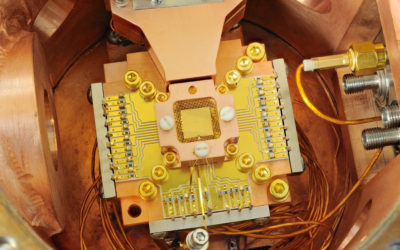“God mode”, for those who aren’t gamers, is a mode of operation (or cheat) built into some types of games based around shooting things. In God mode you are invulnerable to damage and you never run out of ammunition.
Navy DDG(X) Next-Generation Destroyer Program: Background and Issues for the U.S. Congress
Navy DDG(X) Next-Generation Destroyer Program: Background and Issues for the U.S. Congress
Navy DDG(X) Next-Generation Destroyer Program: Background and Issues for the U.S. Congress
The Navy’s DDG(X) program envisages procuring a class of next-generation guided-missile destroyers (DDGs) to replace the Navy’s Ticonderoga (CG-47) class Aegis cruisers and older Arleigh Burke (DDG-51) class Aegis destroyers. The Navy wants to procure the first DDG(X) in FY2030. The Navy’s proposed FY2023 budget requests $195.5 million in research and development funding for the program.
Navy Large Surface Combatants (LSCs)
Force-Level Goal
The Navy refers to its cruisers and destroyers collectively as large surface combatants (LSCs).The Navy’s current 355-ship force-level goal, released in December 2016, calls for achieving and maintaining a force of 104 LSCs. The Navy’s FY2023 30-year (FY2023-FY2052) shipbuilding plan, released on April 20, 2022, summarizes Navy and OSD studies outlining potential successor Navy force-level goals that include 63 to 96 LSCs.
Existing LSCs
The Navy’s CG-47s and DDG-51s are commonly called Aegis cruisers and destroyers because they are equipped with the Aegis combat system, an integrated collection of sensors and weapons named for the mythical shield that defended Zeus. The Navy procured 27 CG-47s between FY1978 and FY1988. The ships entered service between 1983 and 1994. The first five, which were built to an earlier technical standard, were judged by the Navy to be too expensive to modernize and were removed from service in 2004-2005. Of the remaining 22 ships, the Navy’s FY2023 budget submission proposes retiring 17 in FY2023- FY2027, and the final 5 after FY2027.
The first DDG-51 was procured in FY1985 and entered service in 1991. The version of the DDG-51 that the Navy is currently procuring is called the Flight III version. The Navy also has three Zumwalt (DDG-1000) class destroyers that were procured in FY2007-FY2009 and are equipped with a combat system that is different than the Aegis system. (For more on the DDG-51 and DDG-1000 programs, see CRS Report RL32109, Navy DDG-51 and DDG-1000 Destroyer Programs: Background and Issues for Congress, by Ronald O’Rourke.)
LSC Industrial Base
All LSCs procured for the Navy since FY1985 have been built at General Dynamics/Bath Iron Works (GD/BIW) of Bath, ME, and Huntington Ingalls Industries/Ingalls Shipbuilding (HII/Ingalls) of Pascagoula, MS. Lockheed Martin and Raytheon are major contractors for Navy surface ship combat system equipment. The surface combatant industrial base also includes hundreds of additional component and material supplier firms.
DDG(X) Program
Program Designation and Lead Ship Procurement
In the program designation DDG(X), the X means the precise design for the ship has not yet been determined. As mentioned earlier, the Navy wants to procure the first DDG(X) in FY2030, though the date for procuring the first ship has changed before and could change again. Procurement of DDG-51s—the type of LSC currently being procured by the Navy—would end sometime after procurement of DDG(X)s begins.
Navy’s General Concept for the Ship
Figure 1 shows a Navy rendering of a notional DDG(X) design concept. The Navy approved the DDG(X)’s top- level requirements (i.e., its major required features) in December 2020. A November 2022 Congressional Budget Office (CBO) report on the Navy’s FY2023 30-year shipbuilding plan states that “the Navy has indicated that the initial [DDG(X)] design prescribes a displacement of 13,500 tons,” which would be about 39% greater than the 9,700-ton Flight III DDG-51 design.

Navy Rendering of Notional DDG(X) Design. Source: Slide 5 from briefing on DDG(X) program by Captain David Hart, DDG(X) Program Manager, January 12, 2022, presented at Surface Navy Association annual symposium.
The Navy envisages the DDG(X) as having (1) Flight III DDG-51 Aegis combat system elements; (2) more growth margin than the Flight III DDG-51 design, meaning more space, weight-carrying capacity, electrical power, and cooling capacity (aka SWAP-C) for accepting additional or higher-power equipment and weapons (including directed- energy weapons) over the ship’s service life; (3) an integrated power system (IPS); (4) reduced vulnerability due to reduced infrared, acoustic, and underwater electromagnetic signatures; (5) increased cruising range and time on station; and (6) increased weapon capacity.
The Navy states that the baseline DDG(X) design, like the Fight III DDG-51 design, is to include 96 standard Vertical Launch System (VLS) cells, with an ability to incorporate 12 large missile launch cells in place of 32 of the 96 standard VLS cells. It is also to include two 21-cell Rolling Airframe Missile (RAM) launchers and an ability to be built with an additional mid-body hull section, called the Destroyer Payload Module (see Figure 1), that would provide additional payload capacity. The Navy states that
The Future Naval Force Study (FNFS) and the Future Surface Combatant Force Analysis of Alternatives (FSCF AoA) identified the requirement for future large surface combatants (LSCs) to be capable of hosting directed energy (DE) weapons, larger missiles for increased range and speed, increased magazine depth, growth in organic sensors, and an efficient integrated power system to manage the dynamic loads… [S]tudies were performed from FY 2018 to FY 2020 that considered modification of existing surface combatant and amphibious ships in addition to new concepts. These studies concluded that a new material solution via DDG(X) is required to deliver the necessary margins and flexibility to succeed the DDG 51 Class as the next enduring LSC…. By including the DDG 51 FLT III combat system elements in the DDG(X) baseline, Navy is taking an “evolutionary” (vice “revolutionary”) approach to the [DDG(X)]class, incorporating a critical lesson learned from the successful evolution of the DDG 51 Class from [the Aegis cruiser design].
(Source: Department of Defense Fiscal Year (FY) 2023 Budget Estimates, Navy, Justification Book, Volume 2 of 5, Research, Development, Test & Evaluation, Navy, April 2022, p. 475.)
Procurement Quantities and Procurement Cost
The Navy has not specified how many DDG(X)s it wants to procure. The Navy’s FY2023 30-year shipbuilding plan projects LSCs being procured in FY2030 and subsequent years in annual quantities of one to three ships per year.
In constant FY2019 dollars, the Navy wants the first DDG(X) to have a procurement cost of $3.5 billion to $4.0 billion, and for the 10th ship in the class to have a procurement cost of $2.1 billion to $2.5 billion. The November 2022 CBO report estimates the DDG(X)’s average procurement cost in constant FY2022 dollars at $3.1 billion to $3.4 billion—about 35% to 43% more than the Navy’s estimate (shown in the CBO report) of $2.3 billion to $2.4 billion. The CBO and Navy estimates are about 41% to 55%, and 5% to 9%, respectively, more than the DDG-51’s procurement cost of about $2.2 billion.
Issues for Congress
Issues for Congress regarding the DDG(X) program include the following: (1) Would a new LSC larger than the Flight III DDG-51 design be consistent with the Navy’s Distributed Maritime Operations (DMO) concept, which envisages a future fleet with a smaller proportion of larger ships and a larger proportion of smaller ships? (2) The Navy in the past has studied options for a lengthened version of the DDG-51 that would displace between 11,000 and 12,000 tons. Would the DDG(X) be more cost-effective than a lengthened DDG-51? (3) Has the Navy accurately identified the DDG(X)’s required operational capabilities? (4) Why is there a 35% to 43% difference between the CBO and Navy estimates of the DDG(X)’s average procurement cost? (5) Would future Navy budgets permit the procurement of DDG(X)s in desired numbers while adequately funding other Navy priorities? (6) Has the Navy taken adequate steps to mature DDG(X) technologies and mitigate technical, schedule, and cost risk in the program? (7) Has the Navy planned adequately for the transition from DDG-51 procurement to DDG(X) procurement, and for resulting impacts on the shipbuilding industrial base?
FY2023 Funding Request and Congressional Action
The Navy’s proposed FY2023 budget requests $49.7 million for Project 0411 (DDG[X] Concept Development) within Program Element (PE) 0603564N (Ship Preliminary Design & Feasibility Studies), which is line 47 in the Navy’s FY2023 research and development account, and $145.8 million for “DDG(X) Power & Propulsion Risk Mitigation & Demonstration,” which forms part of Project 2471 (Integrated Power Systems [IPS]) within PE 0603573N (Advanced Surface Machinery Systems), which is line 49.
The joint explanatory statement for the FY2023 National Defense Authorization Act (NDAA) (H.R. 7776) recommends approving the Navy’s FY2023 funding requests for the DDG(X) program (PDF pages 516 and 517 of 748). Section 130 of the H.R. 7776 prescribes certain aspects of the DDG(X) acquisition strategy. The joint explanatory statement discusses Section 130 briefly (PDF pages 6-7 of 748) and directs the Navy to provide a report on the Navy’s pursuit of an electric-drive propulsion system for the DDG(X) (PDF page 15 of 748).
The explanatory statement for the FY2023 DOD Appropriations Act (Division C of H.R. 2617) as released by the Senate Appropriations Committee on December 19, 2022, approves the Navy’s FY2023 funding requests for the DDG(X) program (PDF page 214 of 329).
Republished in the State of California as a work of the United States government

Ronald O’Rourke is a specialist in naval affairs.
Related Articles
Understanding the building blocks for Australia’s quantum future
Australia is undergoing an exciting period of strategic technology policy review and development. The release of its first National Quantum Strategy this week committed the government to building the world’s first error-corrected quantum computer. This is a strategically important technology that has the potential to improve productivity and supply chain efficiency in diverse industries, lower costs across the economy, help reduce carbon emissions and improve public transportation.
Japan needs stronger deterrence than its new defense strategy signals
Since World War II, Japan had long chosen not to possess long-range strike capabilities that could be used against enemy bases. But the Japanese government changed course in December 2022 when it adopted the new national defense strategy (NDS), which included a commitment to acquiring a so-called counterstrike capability. But in order for this new strategy to contribute to deterrence and alter the nation’s defensive role as the ‘shield’ in its alliance with the United States, Tokyo needs to go further than what the NDS outlines.



